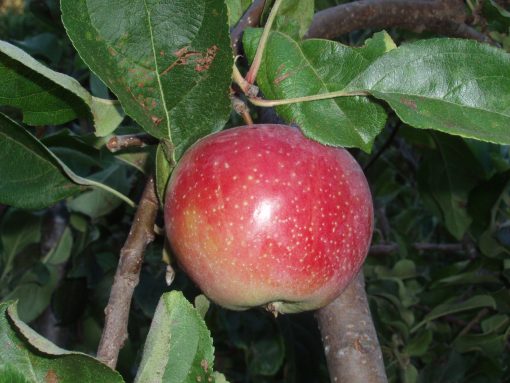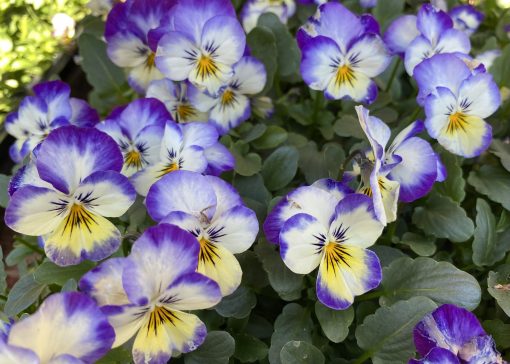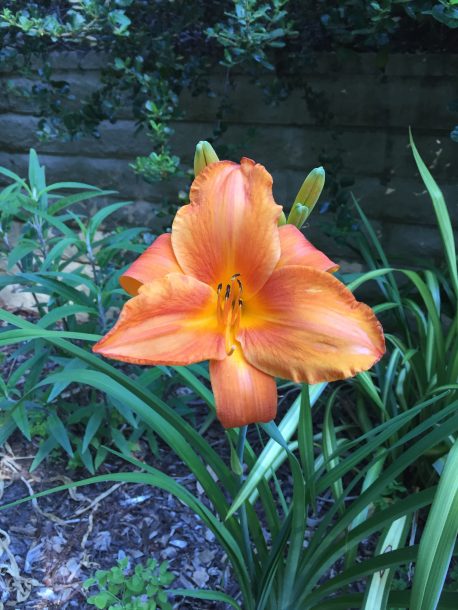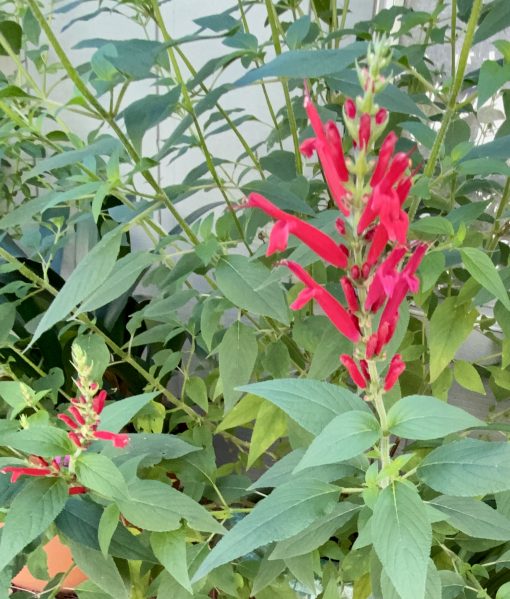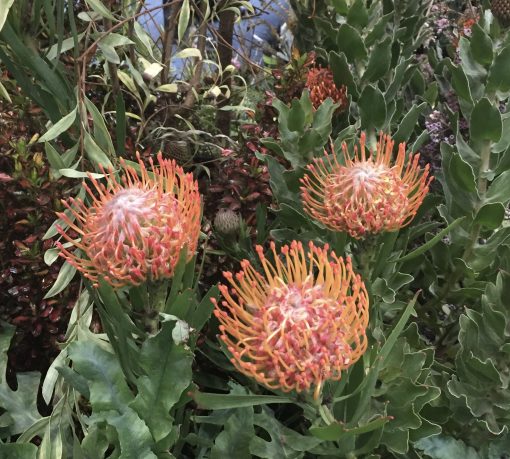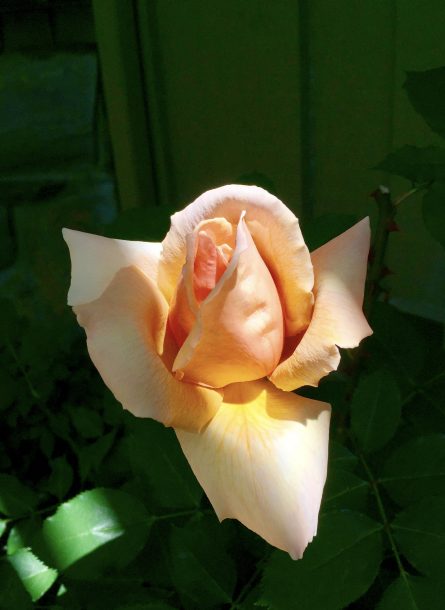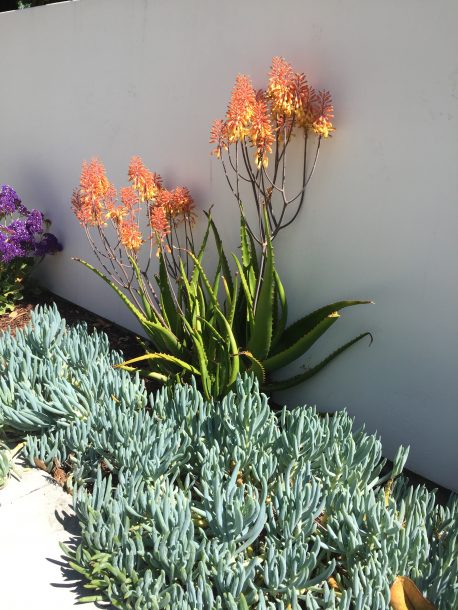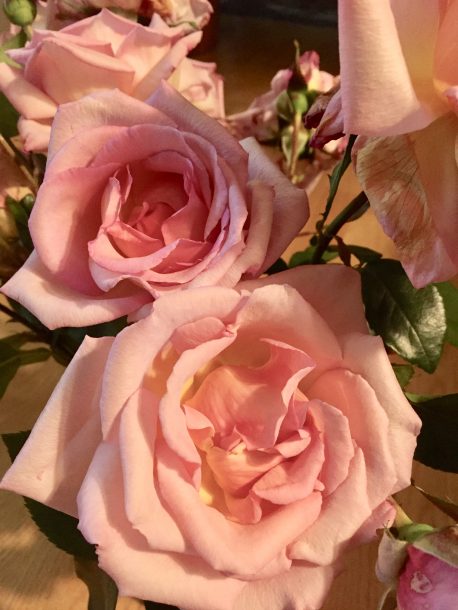
When Juliet tells Romeo that “a rose by any other name would smell as sweet” she must have been referring to the Compassion rose. Actually, this line is not in the original version of Shakespeare’s play but was an edit in 1599 according to Wikipedia but if you’ve ever smelled the Compassion climbing rose you’d not quibble over semantics.
Roses are the flower of love. Many of us have wonderful memories of favorites from past gardens or lovely bouquets that we were given or received on Valentine’s Day. It’s dormant season for roses which is a good time for adding a new one to your garden. And if you haven’t already pruned those in your own garden it’s not too late.
Roses, whether bush types, climbers or carpet varieties use a moderate amount of water similar to echinacea, hellebores and heuchera. Some roses like Cecile Brunner and rugosa need even less irrigation similar to cistus.
New this year from Week’s Roses is a shrub rose that can be trained at a climber. Cosmic Clouds has rich purple flowers with a white reverse and has a strong, fruity fragrance. This rose has a high disease resistance to powdery mildew, downy mildew and rust.
Another new rose from Week’s this season is Quest for Zest. A medium tall grandiflora, this double yellow rose with lighter yellow outer petals has both a strong citrus scent and is highly disease resistant. If only I had more sun I’d want this one, too, in my little garden.
It’s not too late to prune your roses if you haven’t already. Here are a few tips.
Most of us want our rose bushes to produce lots of roses on a compact shrub and not just a few exhibition size blooms so prune your shrubs moderately. The goal is to keep the center of the plant open for good air circulation aiming for a vase-shaped bush with an open center. Cut out canes that cross, appear weak or are diseased, spindly or dead. Healthy canes appear green or reddish while old and dying canes are brown. Cut back the remaining stems by about one third. When pruning, cut canes at a 45-degree angle just above an outward facing leaf bud or a swelling on the cane Slant the cut away from the bud to encourage growth outward. Clean pruners after every use to prevent the spread of disease and keep your pruners sharp.
Heirlooms roses such as David Austin, other old antique garden roses, and floribunda roses require less pruning because their open look is part of their charm. Keep this in mind and prune lightly. Old garden roses that bloom once in the spring should be pruned after flowering.
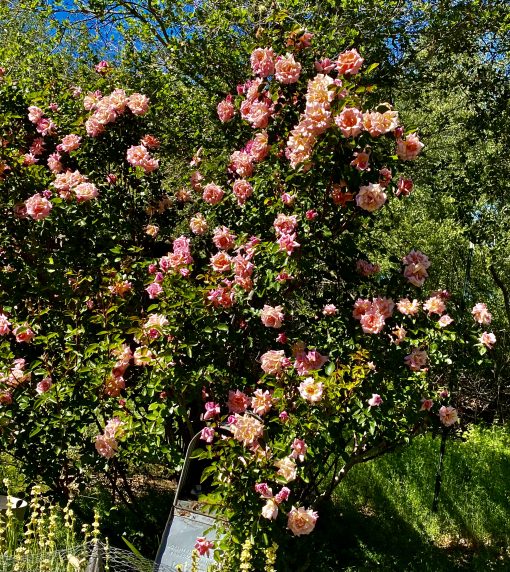
Same goes for climbing roses. Cut out extra stems if there are too many and also cut back long established canes to about the place where they are slightly thicker than a pencil. Then cut each side stem down to several inches. This will make the cane flower along its complete length for a beautiful spring display.
It’s best to prune your roses before they start leafing out or some of their energy will be wasted. Pull off and rake away any old leaves. They can spread fungal spores. Consider spraying dormant plants with a combination of organic horticultural oil and copper soap or lime-sulfur. If you usually only have problems with black spot you can use a mixture of 1 teaspoon baking soda with a few drops of light horticultural oil in 1 quart water and spray every 7 to 10 days during the spring.
Prune your roses throughout the growing season, too. Deadheading, or cutting off spent flowers, encourages plants to re-bloom. Mulch around your roses to conserve water and encourage soil microorganisms.
Don’t worry whether your pruning job is perfect. Roses are super forgiving and you can always trim them up again later.

